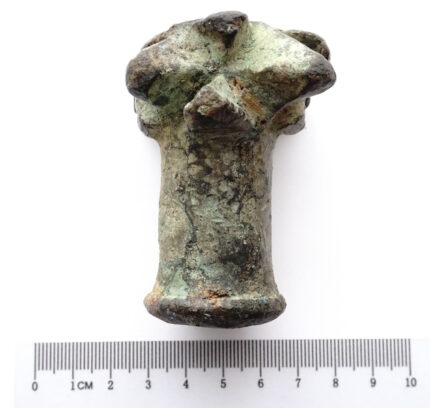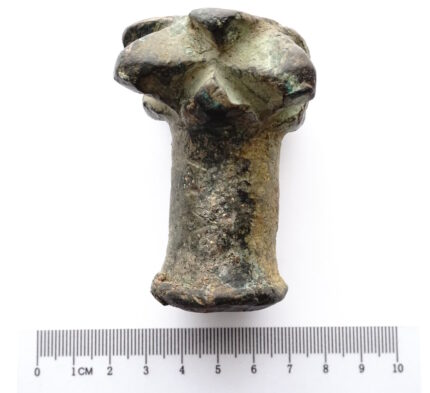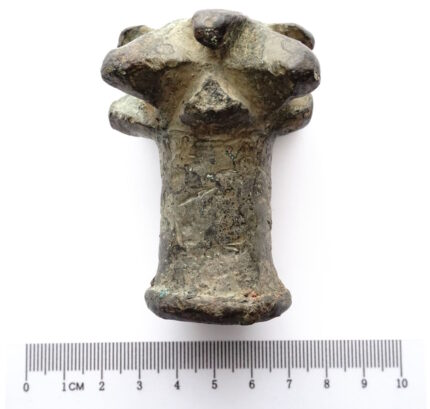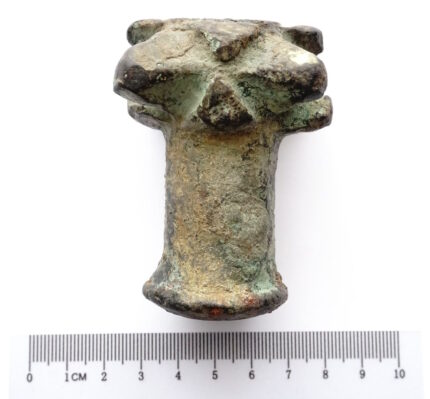The head of a medieval star-shaped mace has been discovered during construction of a barn in Wilków, Lublin Voivodeship, east Poland. It was found last week in the sand and rubble of construction by twelve-year-old Witold Bołtuć who recognized it as a medieval artifact. His parents promptly reported their son’s find to experts at the University of Lublin.
The mace (buława in Polish) was introduced to Poland by the nomadic Turkic peoples who migrated to Eastern Europe in the 7th and 8th centuries, possibly the Khazars. As it gained popularity in what are now Poland, Ukraine, Russia, and Hungary its original combat function evolved into a symbol of military power. These weapons were not used by ordinary soldiers; they were the exclusive province of commanding officers.
The newly-discovered star mace head was cast in bronze and is just under three inches high. It was definitely not just symbolic, as bent and damaged pyramid knobs indicate it saw intensive use, perhaps in combat, perhaps recycled for a new purpose, for use as a tool like a hammer, for instance. It has been tentatively dated to between the 12th and 14th centuries.
The three rows of spikes in the stylized shape of a skull classifies it as a Type IV head. The type is usually found in the territory of the Kievan Rus which is where they were originally produced. The type was copied elsewhere in Eastern Europe, and several comparable examples in the Museum of Cracow were produced in Hungary. Because of the damage to this mace head, its origin is difficult to determine.
The mace head will be assigned to a museum, likely the Vistula Museum in Kazimierz Dolny, where it will studied and conserved.




🤨️ A so-called pernach / перна́ч / piernacz –i.e. because of a shape similar to an arrow with feathering– particularly made of (rather soft) BRONZE, instead of STEEL?! – OK, I am no expert here, but couldn’t it have been made at any given point in time, within the last 3K years, and maybe in the Bronze Age?
——-
PS: Maybe metallurgy could reveal, where and when the materials were sourced from.
I think there dating is based on the design, in comparison to other maceheads. Design is relatively easy to date because people tend to copy other people’s designs, partly because what buyers/owners want is a copy of something someone else has got. It is all about fashion.
That is quite close to where I am living!
It looks like something that spent its latter years in the kitchen as something used to pound and grind seeds.
This has been a life long interest of mine, and I absolutely agree with Trevor! We just don’t know whose or when the “kitchen” might be – and when I saw the picture that was my first thought!